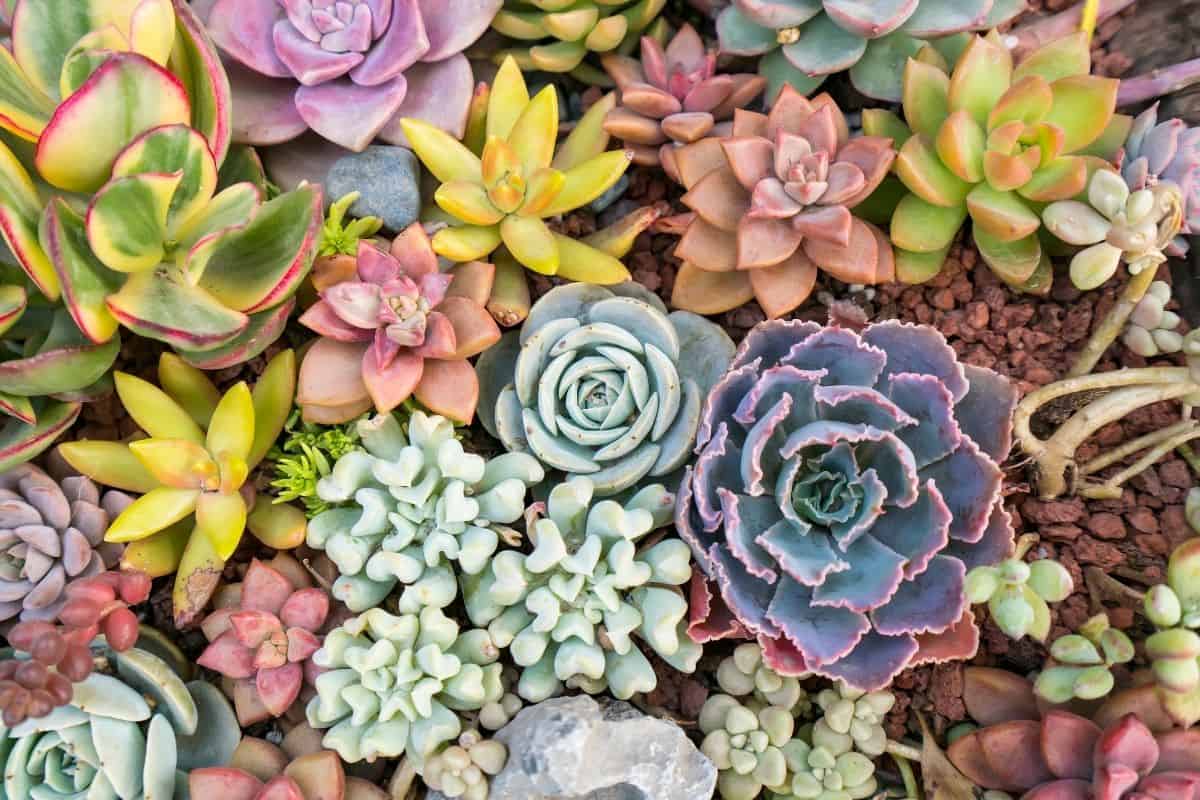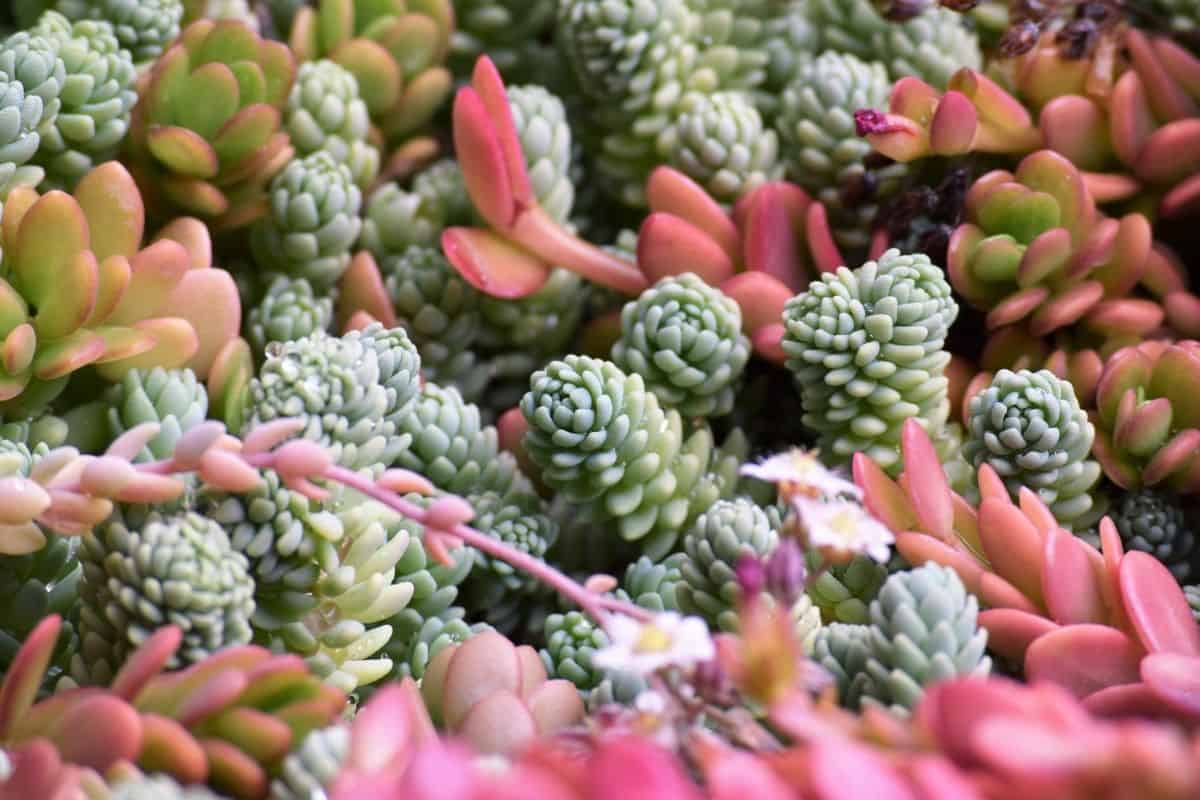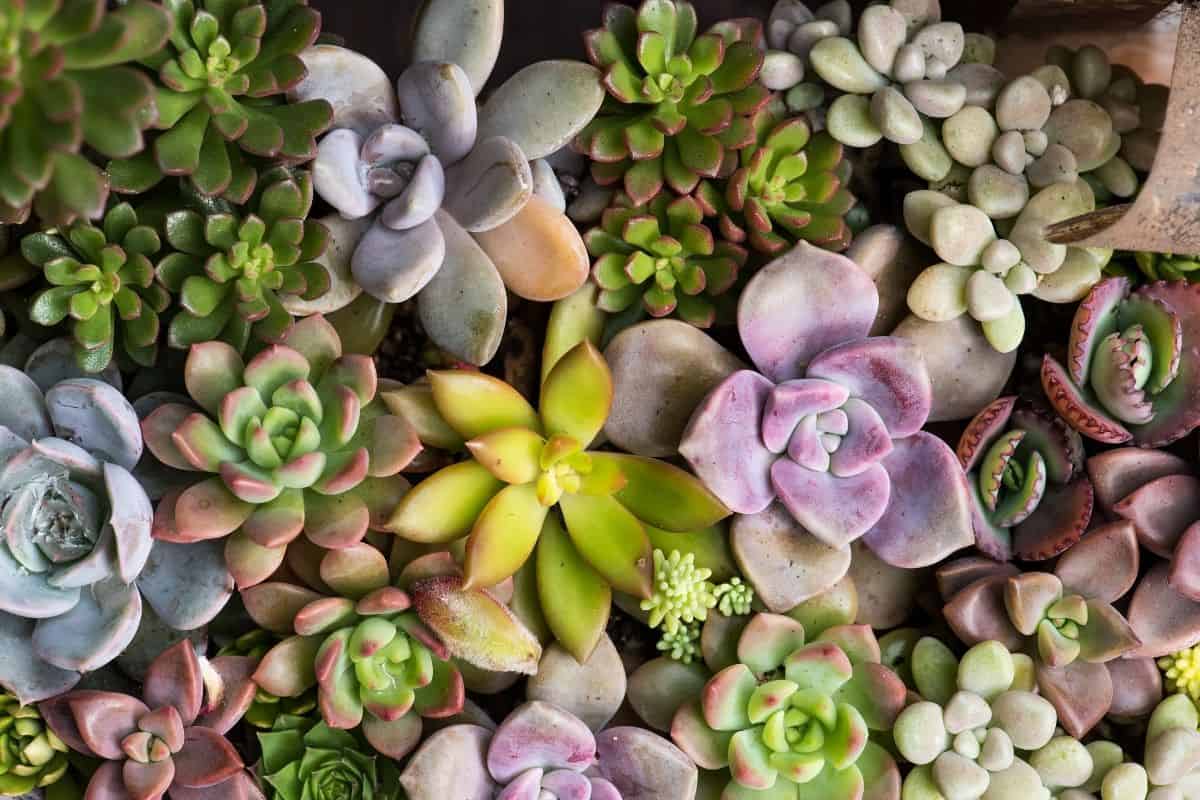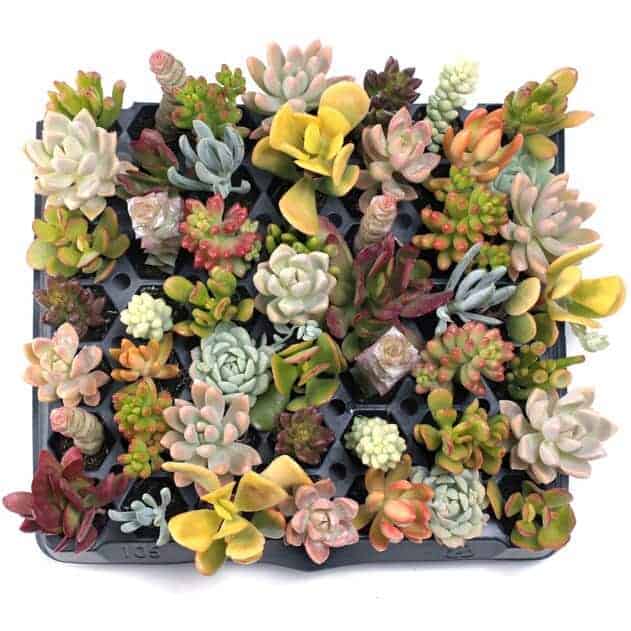
Have you ever looked at the gorgeous and vibrantly colored succulents on Instagram and wondered why your plants don’t look quite so colorful? You may have the same cultivars as the plants in the photos, but your succulents’ colors just aren’t quite as bright? Thankfully, there a few steps you can take toward eliminating your succulent envy.
If you gave ten different gardeners each a succulent of the same variety, depending on the conditions they kept the plant in, you might be looking at ten different shades of the same succulent after several months. Each gardener will likely keep their plant in a different environment, which will have a tremendous impact on the plant’s color. The environmental reason behind the varying colors? Stress!
Types of Succulent Stress

There are many factors in a succulent’s environment that can impact how vibrant its leaves are. Some succulents may change color according to the season or the average daily temperature. Even plants that are kept in ideal conditions may change throughout the year. Succulents that are kept outdoors will experience stress during cold temperatures that can affect their color.
The amount of water a succulent receives can also affect the plant’s color. Withholding water from a succulent will also put stress on the plant, causing them to produce higher levels of pigmentation.
However, the biggest factor in the vibrancy of a succulent’s leaves is how much sunlight the plant gets every day. Succulents that are kept in shadier conditions will be paler than succulents kept in full sun for much the same reason that you will be paler if you stayed indoors all summer rather than at the beach.
No products found.
Just as your skin develops more pigmentation to keep you protected from the sun’s rays, succulents produce more pigmentation to prevent the leaves from being burned by the sun. Anthocyanin is one of those pigments - it is typically responsible for vibrant red, purple, blue, or black colors in plants.
Using this knowledge to your advantage, one way that you can brighten the colors in your garden is to expose your plants to more sunlight. The increase in sunlight will cause the plant to endure mild to moderate stress, depending on how much more light you expose the plant to and how much light it was receiving to begin with.
Using Succulent Stress to Your Advantage

If the idea of stressing your plant out to achieve brighter colors concerns you, you must understand that this process is a natural part of the changing seasons. Plants grown in the wild will endure changes in temperature, water, and sunlight throughout the year, so don’t worry about damaging the succulents in your garden.
The process of stressing your succulents should be closely monitored to prevent your plants from being damaged by too much sunlight. If your plants are kept in a relatively shady area or receive a less than ideal amount of daily sunlight, you shouldn’t immediately transition your plants to a full day of direct sunlight.
To put the correct amount of stress on your plant, you should transition your succulent into more sunlight slowly. It’s best to transition your plant to full sunlight over a period of about one to two weeks. Every few days you can gradually increase the amount of sunlight your plant is exposed to until it’s adapted to life in full sun. Increasing the light by about 30 minutes each time should be sufficient.
It’s generally recommended to give succulents a few days at the same level of light in order to properly adjust. This allows the plant some time to adapt before it’s stressed again with another increase in light. Many experts recommend increasing light exposure every four to seven days.
As you increase the amount of sunlight, keep an eye out for any signs that you may be exposing your succulent to too much stress. If your succulent starts to look unhealthy, just give it a few extra days at its current level of light before increasing again. If you progress too quickly you may kill your beloved succulent.
A Word of Caution
The more extreme the change in sunlight, the more slowly you’ll need to transition your succulent. For example, if your plant is going from a shady area to full sun, you’ll probably need to take a full two weeks to safely transition your plant. However, if your plant is getting partial sun, it shouldn’t take quite as long to adjust to full sun.
As you increase the amount of sunlight your plant gets every day, it’s essential that you prevent the plant from being exposed to extreme temperature changes. Extreme heat or cold can add extra stress that just might push your plant over the edge. If you’re expecting a heat wave or cold front, you may want to bring your succulent indoors.
Continue watering the plant when the soil is dry as well. Although temperature and water will also cause stress and enhance pigmentation, it’s important to only use one method at a time. Too much stress may damage or kill your succulent.
Remember to keep a close eye on your succulent throughout this process. As you expose your plant to more sunlight, you may need to water it more frequently due to evaporation, so watching your plant closely will help you provide the best care while you work toward full sun.
So, the next time you see a vibrant, colorful succulent online and you wish your own plants looked like that, you can rest easy knowing that you can achieve intense pigmentation in your garden too. You no longer need to scroll through those photos with succulent envy.
Increasing the sunlight for your succulents slowly and carefully over a period of weeks will help bring out their best colors. The colorful garden of your dreams is completely attainable, but you just need to be willing to let your plants endure a little stress.
Stress is a natural part of life, for both you and your plants, but just remember that there is a bright side! Now you can use stress to your advantage to help your succulent collection look brighter and bolder than ever.



Eileen Raymond
Thanks for your sharings
Christopher Johnston
Thanks for sharing, I absolutely loved this post!
When I first started growing succulents, I couldn't figure out why mine never looked as good as the ones I would see online, in blog posts, and on social media. Sunlight is such an important part of keeping succulents looking there best. Not only can sunlight help succulents keep their beautiful bright colors, it can also prevent stretching as well!
Best wishes, and happy growing to you all!
Patrick Grubbs
That's exactly right! Thanks for stopping by Christopher!